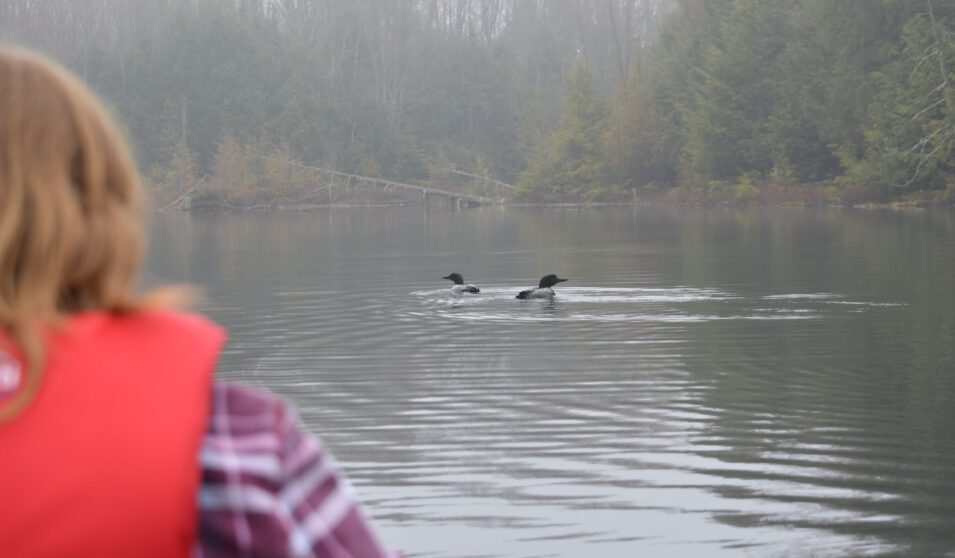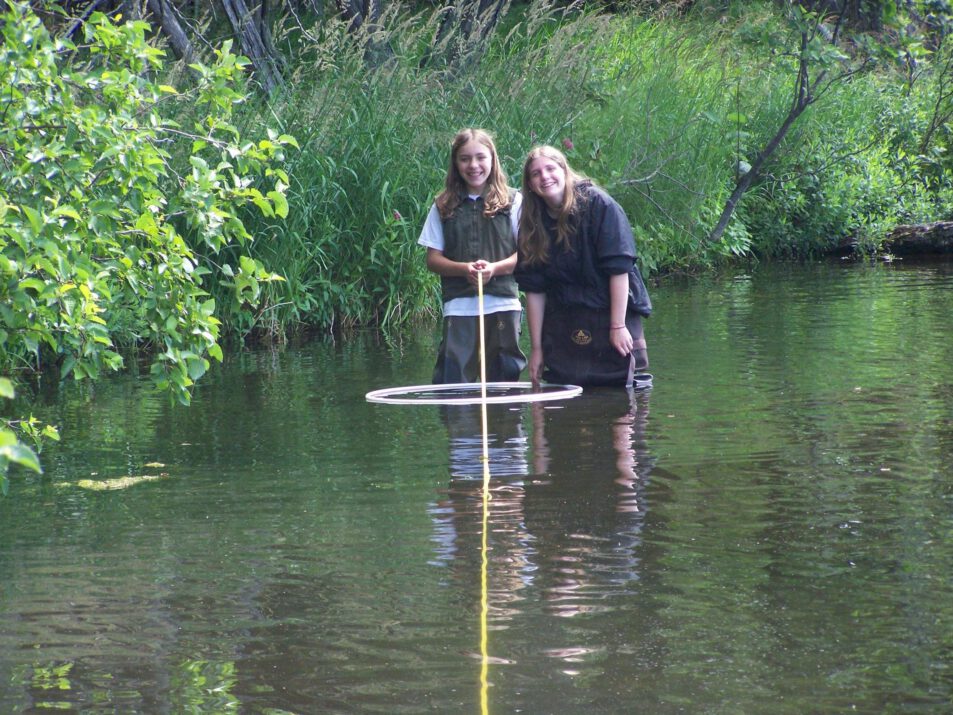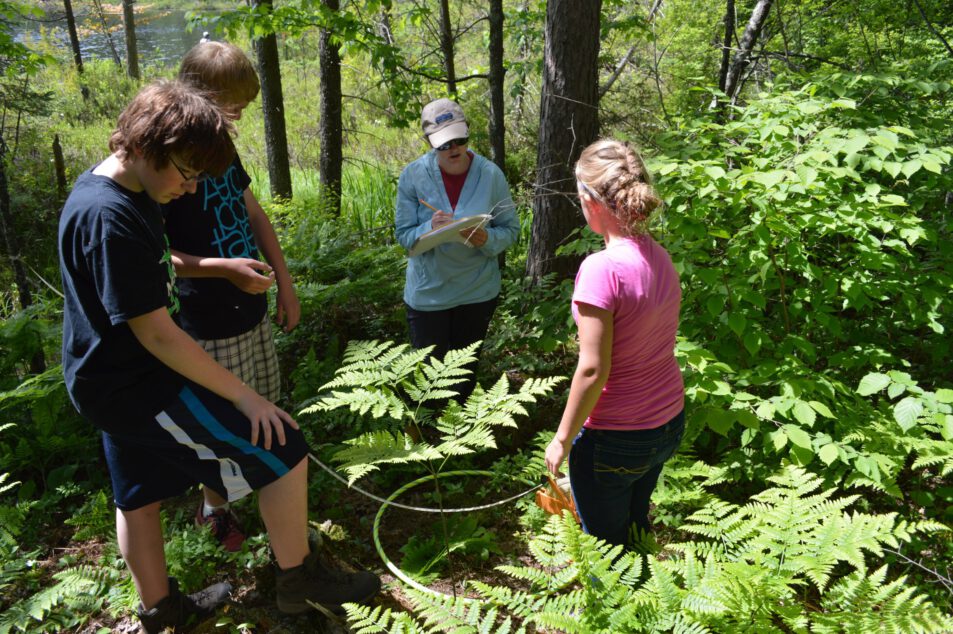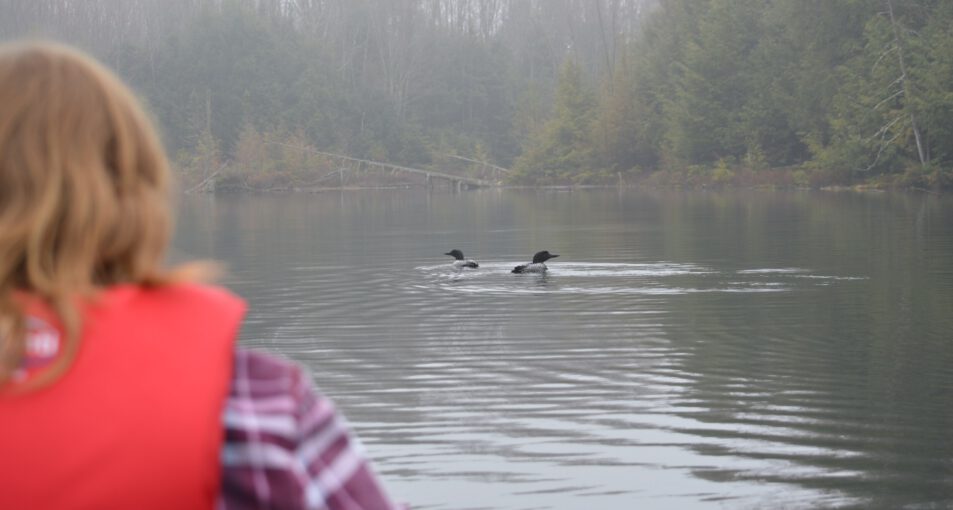In the Northwoods of Wisconsin, the Common Loon, Gavia immer, has captured the fascination of researchers from across the country for over 20 years. As a result of decades of work, we have learned an incredible amount about loons and their relationship with our lakes in Wisconsin. What some may not know, however, is that some of this knowledge can be contributed to the efforts of high school students who started studying loon lake habitats in Iron County 20 years ago.
In 1999, the Wisconsin DNR approached the Iron County Land and Water Conservation Department with the idea of piloting a citizen-monitoring program for the placement of artificial loon nesting platforms. The concept for the Practicum in Loon and Lake Ecology came out of this discussion, with students from Hurley and Mercer School Districts involved in the pilot project during the spring and summer of 2000.
This year marks the 20th anniversary of the “Loon Project,” which helps improve Iron County's loon habitats and helps educate the public on the importance of healthy lakes and ecosystems.
Students select lakes to monitor based on water quality and habitat features. They construct nesting platforms according to the WDNR recommendations, and place them on the lakes in the spring of each year. Over the next few months, the students visit each site and record data on whether the platforms are being used, how many eggs were laid, if chicks have hatched, and how many.
As a result of the findings that loons are sensitive to water quality conditions by the WDNR Integrated Science Services, students also monitor water quality on each of the lakes in the study. The water quality measurements include dissolved oxygen, pH, temperature, water clarity and inventory aquatic insects. Recorded results are shared with resource managers and lake residents. The students learn how to conduct each of these tests and how they relate to loon habitats.
Shoreland health, also important to loon productivity, is assessed at each lake. This is taught over the course of three visits to the lake. During the first visit, students learn about watersheds and the negative impacts of poorly planned development can have on a watershed. The students use maps, aerial photography, and the Wisconsin lake book to determine lake type, percent of developed land, location of the lake, and lake characteristics.
During the second visit, students look at the shoreland buffer, learning about the importance and function of natural buffers, invasive species, and erosion/sedimentation. Students observe the percent of ground cover, shrub layer and canopy cover along the lake shore.
During the final visit, students learn about littoral zone health (an area within the waterbody nearest to shore) and how native aquatic plant life can add to shoreline stabilization. The students look at the percent coverage of aquatic plants, learn how to identify native and invasive aquatic species, and how that can affect the aquatic ecosystem, including loons.
Through the Loon Project, students from Hurley and Mercer have been positively contributing to the lakes in their backyards while learning and having fun. The foundational student research has also helped other researchers make significant findings in recent years.
One of these research areas studies the potential impacts of mercury contamination on loon populations in northeastern Wisconsin. This work examined potential causes of declining loon reproductivity on several lakes in Iron, Vilas, Oneida and Forest Counties. Results from this study are pending, but initial findings suggest that loons nesting on lakes with high mercury levels and low pH levels have reduced chick production and survival. In addition, studies have looked at the impacts of habitat loss on loon populations. One finding of this work shows that loons living on small lakes where there are no islands have reduced numbers of chicks. Results from the placement of artificial nesting platforms on this type of lake have doubled chick production and conservation agencies are considering ways to manage and maintain platforms on target lakes.
To date, the Loon Project has been monitoring lake health and loon chick production for 20 years, resulting in 82 successfully hatched loon chicks off the artificial platforms that the students themselves built and placed in Iron County.
Not only does the program provide students with a broader knowledge of Wisconsin’s bountiful natural resources, but it has gone beyond all original expectations, training the next generations of foresters, land and water conservationists, limnologist, biologists, and (perhaps most importantly) well-informed citizens.
Thanks to the wonderful support of the Land and Water Conservation Department, our local community is stronger and smarter when understanding the complexity of our natural resources.








